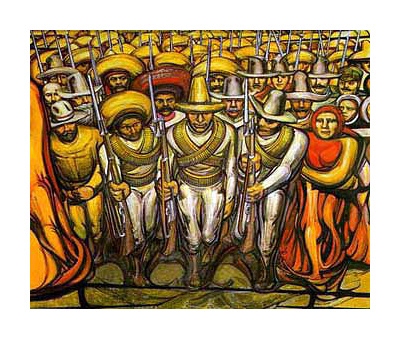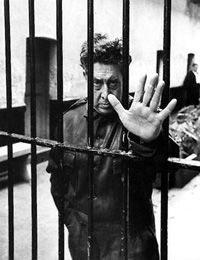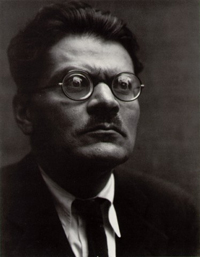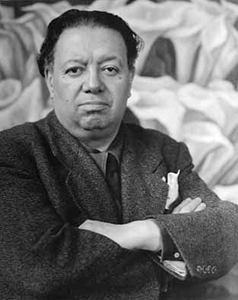|
| |
Mexican Muralism - Los Tres Grandes

David Alfaro Siqueiros: From the Dictatorship of Profirio Diaz to the Revolution - The Revolutionaries.
Acrylic on plywood, 1957-1965. Hall of the Revolution
National History Museum, Chapultepec Castle, Mexico City, Mexico
Mexican Muralism was born in the 1920s in post-revolutionary Mexico. In 1921 Diego Rivera returned to Mexico from Europe to continue his prolific career as an artist. Rivera soon developed his own stlye of depicting his beloved country's history with sweeping brush strokes and bold colors on Mexico's city walls. Rivera along with fellow artists Jose Clemente Orozco and David Alfaro Siqueiros were the most prominent members of the Mexican muralism movement and were often referred to as "Los Tres Grandes". Together, they painted thousands of murals expressing themselves in their work and their love for their Mexican culture. Sponsored by the Mexican goverment they converted public spaces into vibrant history lessons and social commentary of the times. Mexican muralism was the first major modern art form that originated outside of Europe and represents one of the most powerful and significant achievements of public art in the twentieth century.

David Alfaro Siqueiros
David Alfaro Siqueiros (December 29, 1896 in Camargo, Chihuahua, Mexico - January 6, 1974 in Cuernavaca, Morelos, Mexico) - Was a painter and muralist known for his social realism work.

Jose Clemente Orozco
José Clemente Orozco (born November 23, 1883 - September 7, 1949 in Mexico City, Mexico), in Zapotlán el Grande (now Ciudad Guzmán), Jalisco; Was a Mexican social realist painter who specialized in bold murals. Orozco was fond of the theme of the human versus the mechanical.

Diego Rivera
Diego Rivera (December 8, 1886 – November 24, 1957 Mexico
City, Mexico), Was a Mexican painter and muralist born in Guanajuato City,
Guanajuato. (Some of Rivera's best murals are in the National Palace in Mexico
City, Mexico)
Click Here for more Information on Latino Art Movement
|
|
|
|




